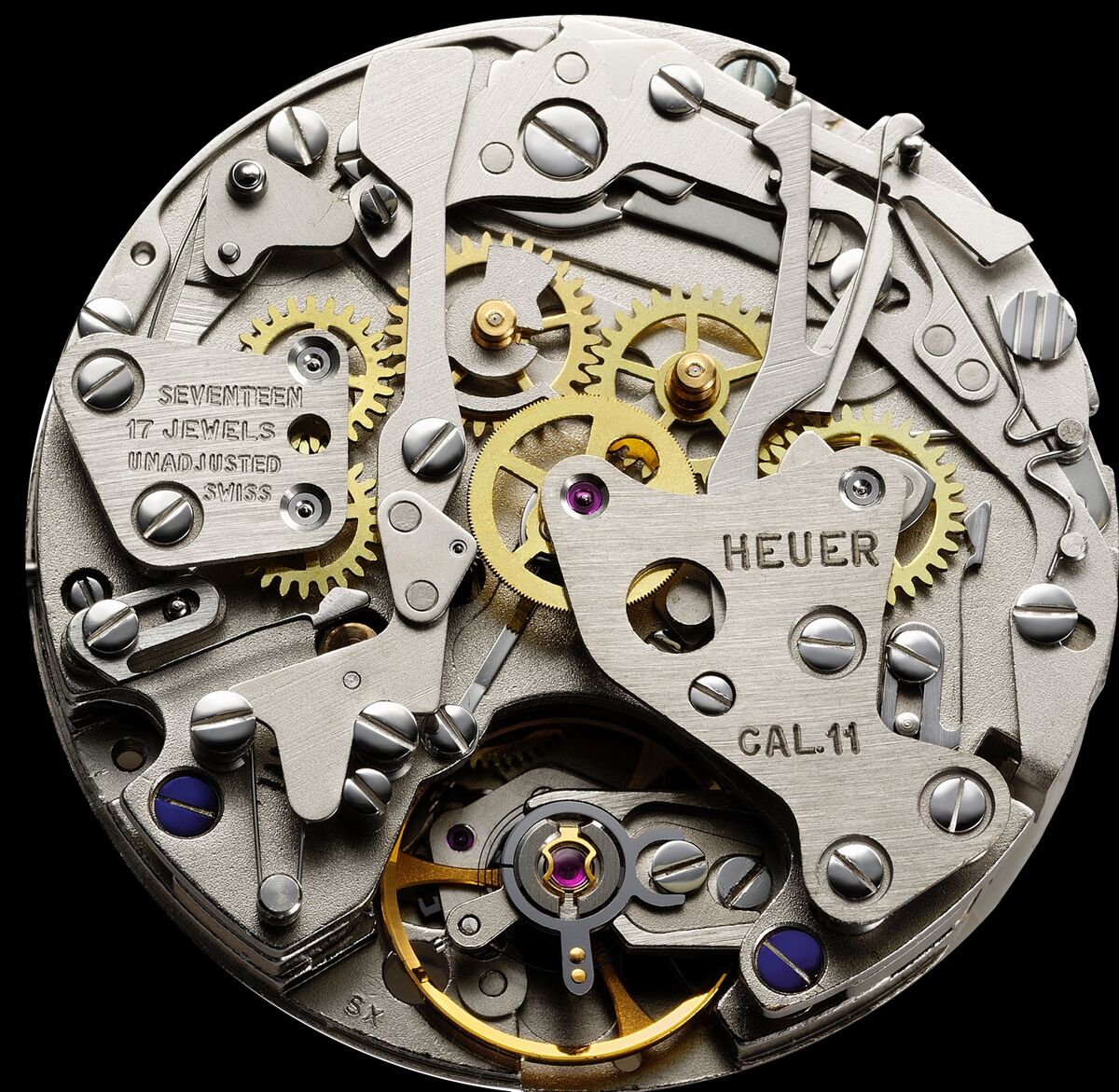| Manufacture | Hamilton-Buren pour le mouvement de base | |
| Manufacture | Dubois-Dépraz pour la planche chrono | |
| Calibre | 11 | |
| Diamètre | 31.00 mm | |
| Hauteur | 7.70 mm | |
| Epoque | 1969 | |
| Angle de levée | 50° | |
| Fréquence | 19'800 |

| Manufacture | Hamilton-Buren pour le mouvement de base | |
| Manufacture | Dubois-Dépraz pour la planche chrono | |
| Calibre | 11 | |
| Diamètre | 31.00 mm | |
| Hauteur | 7.70 mm | |
| Epoque | 1969 | |
| Angle de levée | 50° | |
| Fréquence | 19'800 |

A bit of history
At the time Heuer was a small company and Buren was facing strong competition. In addition Hamilton bought Buren in 1966.
Jack Heuer had to turn to his major competitor Breitling in order to ally and obtain sufficient funds to start the project called "Project 99".
Buren took care of the automatic mechanism. To do this, he was inspired by his Intramatic calibre, calibre 1281, 3.2 mm thick (micro-rotor automatic system). Dubois-Dépraz is in charge of developing the chronograph module and the oscillating pinion, module 8510, while Breitling and Heuer are responsible for the other components and the design of the dial and the watch case.
In September 1967, they filed the patent for the Calibre 11. The combination of a micro-rotor movement and a chronograph module is more than conclusive. After the success of the first trials in 1968, Breitling manufactures a first pre-series of Chronomatic.
These prototypes of the first automatic chronograph were presented to the public on 3 March 1969 at a world press conference. The Intercontinental Hotel in Geneva, as well as at the Palais Pan Am in New York and Tokyo, Hong Kong and Beirut, more than a month before the Basel Fair. The notoriety of the brands involved is a major asset and the presentation of the Chronomatic is much more talked about than that of the Zenith models.
The members of the quartet are showing the public their dozens of Chronomatic pre-production samples, watches equipped with the Calibre 11 movement, with several models from Heuer, Breitling and Hamilton, in a variety of cases and colours.
In the summer of 1969, the Chronomatic group achieved mass production of their models, which then became available to the public in the world's major retail markets.
In conclusion, the group formed by Breitling, Hamilton-Buren, Heuer and Dubois-Depraz is considered the creator of the world's first automatic chronograph with its Chronomatic Calibre 11 model.
This was then used by the four brands to develop models that remain anchored in the history of watchmaking, such as the Heuer Autavia, the Breitling Chronomatic and the Heuer Monaco model.
The Kelek brand used these calibres and the initials JRGK, for Jean-Raoul Gorgerat Kelek, are engraved on the chronograph bridge. Other brands such as Bulova and Elgin, Zodiac and Stowa also used the Chronomatic.
Heuer also used the Lemania 5100 and the Valjoux 7750. Ironically, once bought by the LVMH group, Tag-Heuer used the Zenith calibre. Finally Tag-Heuer built a calibre named 1887, derived from a Seiko movement! This was followed by an in-house development, resulting in the 1969 calibre, named to commemorate the introduction of the Chonomatic.
It is difficult to understand why, in the 2000s, Tag Heuer reissued the Monaco models, crown on the left, with ETA or Sellita calibres with a Dubois Dépraz module, which were also marketed as containing a calibre 11, crown on the left and calibre 12 with the crown on the right.